Genre: Pinball Developer: NuFX Publisher: Electronic Arts Players: 1-4 Released: 1992
The intervention and rehabilitation of Mötley Crüe almost seems blasphemous for the band which defined “sex, drugs, and rock ‘n roll” in the 1980’s. Groupie escapades, strip club infamy, heroin overdoses, and a DUI manslaughter conviction round out of life of excess which ended in 1989 and the release of the band’s top charting Dr. Feelgood album. It’s after this when the newly sober heavy metal glam act’s popularity began to wane that Mötley Crüe managed to endorse a game for the Sega Genesis. After all, Michael Jackson found success teaming up with Sega for video games based on his Smooth Criminal video, so why not Mötley Crüe? Thus, the band, with songs primarily trumpeting sex and drugs, would follow his lead by teaming up with Electronic Arts and releasing of all things a pinball video game…
… Or did they? Originally titled Twisted Flipper, Crüe Ball appears to be a victim of last minute licensing in a desperate attempt to increase sales. Aside from the name change and a few brief appearances of Mötley Crüe’s mascot, Alister Fiend, nothing in the game has any concrete ties to the group. Electronic Arts did license three of the band’s songs for the game — Live Wire from Too Fast for Love, Home Sweet Home from Theatre of Pain, and the eponymous Dr. Feelgood — yet none are heard during the actual pinball levels. Instead, we get a “blistering soundtrack” by Brian Schmidt, a former composer for Data East who “has worked on more than thirty pinball machines and video games.” Not exactly what one would expect upon picking up a Mötley Crüe licensed product no doubt. Schmidt’s soundtrack is good, but it can’t compete with Nikki Sixx’s best, though it’s really not fair to make such an assessment since the licensed songs are full renditions while Schmidt’s stuff is just cycled PCM, typically clocking in at half a minute per song loop.
The packaging and manual also drops another name for its pinball pedigree, Mark Westin Sprenger, who had “spent the last seven years co-designing coin-operated pinball games.” He’s best known for being the artist on a number of Williams’ machines, most notably High Speed. Sprenger’s Crüe Ball is a video pinball game in the mode of Alien Crush, where the game abandons any attempt at replicating a realistic board on the screen a la KaZe’s Super Pinball on the SNES. Monsters roam the field, bonus stages whisk the ball away, and the playfield changes on each of the nine volumes (levels) of the game. Personally I think the more fantastical approach to videogame pinball works far better on these earlier pinball titles as the 16-bit and prior processors just could not handle the perspective and physics to accurately replicate a real pinball machine. Sure, Super Pinball and Pinbot on the NES remain impressive pieces of software for what they accomplished, but they are fairly dull experiences due to the lack of action on the playfield, no doubt a casualty of the processing power required for the more realistic presentation.
Meanwhile, Crüe Ball has no lulls in the action – there is always some monster to smash, wall to tear down, or obstacle to smash. The first volume alone has the player battling Dread Heads and Maggots, smashing through a Breakout-style obstacle, and shooting past Craig to smash down a wall and spin the volume knob it guards. Since the rounds aren’t as involved as on a real pinball table, progress moves along swiftly. With little variety in the missions and generally sparse targets on the playfield, the next objective is always immediately obvious to the player – either destroy all the enemies or drop all the targets. The lack of depth would hurt a real pinball machine, but Crüe Ball makes no attempts to deceive the player into believing it could be a real machine. This emphasis on fast action makes Crüe Ball a fun video game to play at the risk of insulting the pinball purist.
Still, I can’t help but gripe how overly simplistic and basic the table layout remains. Crüe Ball takes place along a vertically scrolling table as many other video game pinball titles, but the tables all carry the same overall look and rounds, making the switch from volume to volume mostly pointless. Though the table is sprawled across three screens, pretty much all of the action takes place in the dead center as the bottom screen is devoted solely to triggering the bonus stage and the top screen being the sealed off room for advancement to the next level. Players spend the bulk of the game in the center, doing the same routine to activate the next round until the top room is unlocked. The fast gameplay and soundtrack really mask the dull and uninspired round progression since the player blazes from one mindless objective to the next without the game giving him a chance to dwell on the repetition of it all.
It would also be nice if blast processing could at least keep the game’s limited physics in check. It’s fairly common to see a fast pinball pass right through the flippers, to have a ball “glued” onto them for a moment, or to have a ball making a beeline for the sink hole to be deflected by a flipper which in no way would have contacted it. Thankfully these gaffs often err in the player’s favor, and no one will be screaming at the game for inexplicably, unavoidably forcing a lost ball. The favorable if at time unrealistic physics and infinite tilts at disposal keep Crüe Ball as easy as a fitting analogy.
This would be all well and good if Crüe Ball succeeded in equaling or improving upon the games it draws from, but it doesn’t. The simple fact is 1992’s Crüe Ball just can’t hold a candle to 1990’s Devil’s Crush (Dragon’s Fury on Genesis) or 1991’s Dino Land; let alone games released afterward. Crüe Ball’s graphics are bland and almost ugly looking. The table lacks detail and polish, and there is little excitement in moving from one drab colored table to the next. The enemies only serve as mobile, destructible bumpers and cannot destroy the pinball as in Metroid Prime Pinball nor really have any traits to distinguish them from one another other than appearance. Perhaps that’s why Electronic Arts sought to get the Mötley Crüe license given that the game has no real asset to garner itself worthwhile recognition among its competition. Even now, there is nothing noteworthy about the game other than the license, and even that is poorly implemented in the game.
Crüe Ball is the kind of game Socrates would enjoy playing in his cave until he broke free and escaped outside into a world full of Necronomicon’s, Psycho Pinball’s, and Metroid Prime Pinball’s. Then he’d try to convince his cavern brethren that Crüe Ball isn’t that great, but, having not been exposed to better pinball video game titles, would disregard his words and continue on smashing Beethoven Dudes and Dread-Heads. The rare spark of innovation such as the Breakout-inspired round on the table and general speedy pace of it all make Crüe Ball a fun, decent game in its own right, and nothing is lost in playing and enjoying it. Only when holding up the game for criticism and comparing it to its peers does the game fall flat. It’s a shame, too, because with better use of its hair metal license, Crüe Ball could have found something to both address the overall poor presentation as well as add a certain level of infamy the Mötley Crüe name deserves.
SCORE: 6 out of 10

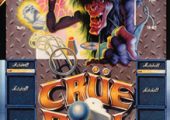
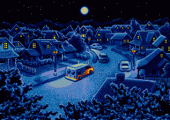
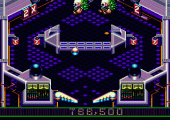
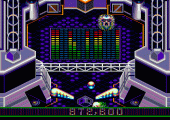
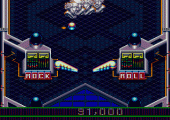
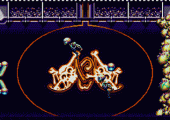
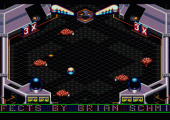
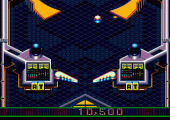
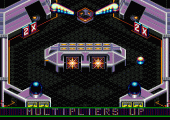
Recent Comments